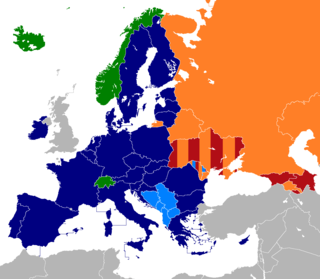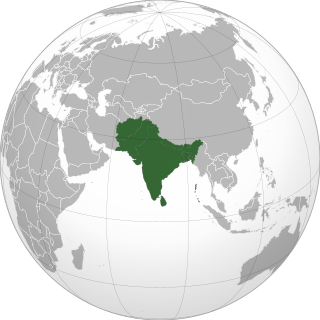 W
WA free-trade area is the region encompassing a trade bloc whose member countries have signed a free trade agreement (FTA). Such agreements involve cooperation between at least two countries to reduce trade barriers, import quotas and tariffs, and to increase trade of goods and services with each other. If natural persons are also free to move between the countries, in addition to a free-trade agreement, it would also be considered an open border. It can be considered the second stage of economic integration.
 W
WThe ASEAN Free Trade Area (AFTA) is a trade bloc agreement by the Association of Southeast Asian Nations supporting local trade and manufacturing in all ASEAN countries, and facilitating economic integration with regional and international allies. It stands as one of the largest and most important free trade areas (FTA) in the world, and together with its network of dialogue partners, drove some of the world's largest multilateral forums and blocs, including Asia-Pacific Economic Cooperation, East Asia Summit and Regional Comprehensive Economic Partnership.
 W
WThe ASEAN–China Free Trade Area (ACFTA) is a free-trade area among the ten member states of the Association of Southeast Asian Nations (ASEAN) and the People's Republic of China.
 W
WCommonwealth of Independent States Free Trade Area (CISFTA) is a free-trade area between Russia, Ukraine, Belarus, Uzbekistan, Moldova, Armenia, Kyrgyzstan, Kazakhstan and Tajikistan. Five CISFTA participants, all except Ukraine, Uzbekistan, Moldova and Tajikistan, are members of the Eurasian Economic Union, comprising a single economic market.
 W
WThe Comprehensive and Progressive Agreement for Trans-Pacific Partnership (CPTPP), also known as TPP11 or TPP-11, is a trade agreement among Australia, Brunei, Canada, Chile, Japan, Malaysia, Mexico, New Zealand, Peru, Singapore, and Vietnam. It evolved from the Trans-Pacific Partnership (TPP), which never entered into force due to the withdrawal of the United States. The eleven signatories have combined economies representing 13.4 percent of global gross domestic product, at approximately US$13.5 trillion, making the CPTPP one of the world's largest free-trade areas by GDP, along with the United States–Mexico–Canada Agreement, the European Single Market, and the Regional Comprehensive Economic Partnership.
 W
WThe Deep and Comprehensive Free Trade Areas (DCFTA) are three free trade areas established between the European Union, and Georgia, Moldova and Ukraine respectively. The DCFTAs are part of each country's EU Association Agreement. They allow Georgia, Moldova and Ukraine access to the European Single Market in selected sectors and grant EU investors in those sectors the same regulatory environment in the associated country as in the EU. The agreements with Moldova and Georgia have been ratified and officially entered into force in July 2016, although parts of them were already provisionally applied. The agreement with Ukraine was provisionally applied since 1 January 2016 and formally entered into force on 1 September 2017.
 W
WAt present, there are four multi-lateral free trade areas in Europe, and one former free trade area in recent history. Note that there are also a number of bilateral free trade agreements between states and between trade blocks; and that some states participate in more than one free trade area.
 W
WThe European Free Trade Association (EFTA) is a regional trade organization and free trade area consisting of four European states: Iceland, Liechtenstein, Norway, and Switzerland. The organization operates in parallel with the European Union (EU), and all four member states participate in the European Single Market and are part of the Schengen Area. They are not, however, party to the European Union Customs Union.
 W
WThe Free Trade Area of the Americas (FTAA) was a proposed agreement to eliminate or reduce the trade barriers among all countries in the Americas, excluding Cuba. Negotiations to establish the FTAA ended in failure, however, with all parties unable to reach an agreement by the 2005 deadline they had set for themselves.
 W
WThe Grand Free Trade Area (GFTA) is a project envisaged by several regional blocs in Africa in order to bring about increased intra-African trade.
 W
WThe North American Free Trade Agreement was an agreement signed by Canada, Mexico, and the United States that created a trilateral trade bloc in North America. The agreement came into force on January 1, 1994, and superseded the 1988 Canada–United States Free Trade Agreement between the United States and Canada. The NAFTA trade bloc formed one of the largest trade blocs in the world by gross domestic product.
 W
WThe Regional Comprehensive Economic Partnership is a free trade agreement among the Asia-Pacific nations of Australia, Brunei, Cambodia, China, Indonesia, Japan, South Korea, Laos, Malaysia, Myanmar, New Zealand, the Philippines, Singapore, Thailand, and Vietnam. The 15 member countries account for about 30% of the world's population and 30% of global GDP, making it the largest trade bloc in history. It is the first free trade agreement among the East Asian China, Japan, and South Korea, three of the four largest economies in Asia. As of 2 November 2021, six of the ten ASEAN and four of the five non-ASEAN signatories have deposited their instruments of ratification of the RCEP with the Secretary-General of ASEAN. The trade pact is projected to enter force on 1 January 2022.
 W
WThe South Asian Free Trade Area (SAFTA) is an agreement reached on January 6, 2004, at the 12th SAARC summit in Islamabad, Pakistan. It created a free-trade area of 1.6 billion people in Afghanistan, Bangladesh, Bhutan, India, the Maldives, Nepal, Pakistan and Sri Lanka to reduce customs duties of all traded goods to zero by the year 2016. The SAFTA agreement came into force on January 1, 2006, and is operational following the ratification of the agreement by the eight governments. SAFTA required the developing countries in South Asia to bring their duties down to 20 percent in the first phase of the two-year period ending in 2007. In the final five-year phase ending in 2012, the 20 percent duty was reduced to zero in a series of annual cuts. The least developed countries in South Asia had an additional three years to reduce tariffs to zero. India and Pakistan ratified the treaty in 2009, whereas Afghanistan as the 8th member state of the SAARC ratified the SAFTA protocol on 4 May 2011.
 W
WA Transatlantic Free Trade Agreement (TAFTA) is a proposal to create a free-trade agreement covering Europe and North America, on both sides of the Atlantic Ocean. Such proposals have been made since the 1990s. Between 2013 and about 2017 an agreement between the United States and the European Union (EU) was under negotiation - the Transatlantic Trade and Investment Partnership - but it was abandoned. If an agreement is reached and ratified on both sides, it could at least in theory be expanded to include the European Free Trade Association (EFTA). Canada and Mexico both have free trade agreements with both the EU and EFTA.
 W
WThe Agreement between the United States of America, the United Mexican States, and Canada, commonly known as the United States–Mexico–Canada Agreement (USMCA) in the United States and the Canada–United States–Mexico Agreement (CUSMA) in Canada, is a free trade agreement between Canada, Mexico, and the United States. It replaced the North American Free Trade Agreement (NAFTA) implemented in 1994, and is sometimes characterized as "NAFTA 2.0", or "New NAFTA", since it largely maintains or updates many provisions from its predecessor.